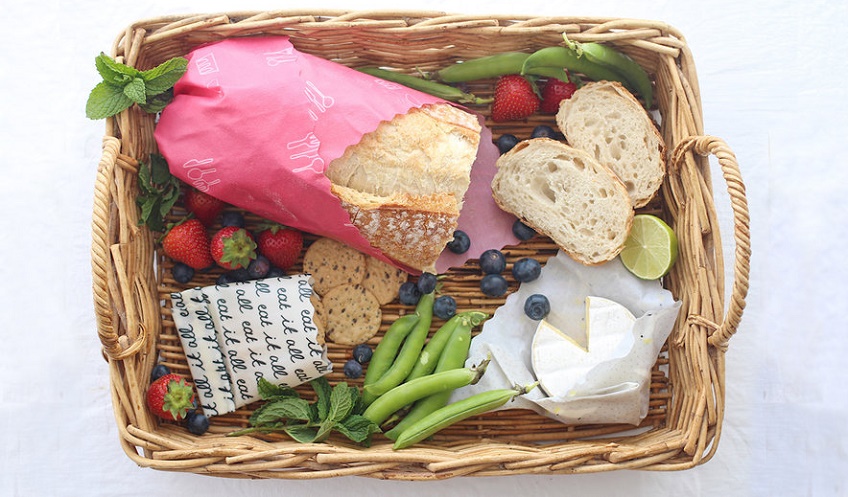Turning to natural and organic products is becoming one of the most positive trends nowadays. People are becoming more and more aware that nature provides us with lots of opportunities to use products the consumption of which doesn’t hurt the environment. Moreover, their use is not only beneficial to our planet but also to our health and wellbeing. One such trend is the use of beeswax wraps for packing food items or storing food leftovers in order for them to last longer. Their use is becoming increasingly common in Australian kitchens due to the many benefits they provide.
A simple square or rectangle piece of cotton infused with a mixture of food-grade beeswax, pine rosin and jojoba or coconut oil is what defines a beeswax wrap. The wax gives the wrap the feature of being waterproof, yet breathable. What makes the wraps sticky is their key ingredient – the rosin.
Today, you can find beeswax wraps in different shapes, designs and colours and use them in your kitchen to store food in the fridge, or to pack lunch for your kids for school. The fact that they are made from safe and natural materials renders them a perfect replacement for plastic packaging. Furthermore, they can be reused over and over again if taken care of properly in the course of one year. A good tip is to refresh them every 1-2 months by placing them on a tray in the sun for a few hours so that the existing beeswax can be remelted.

Another benefit of the beeswax wraps is that they can be composted when they can’t be reused anymore. They can be cut into stripes for compost purposes or, you can use them as a fire-starter. This eco-friendly feature makes the beeswax wraps a very popular choice, especially with the environmentally-conscious people.
When it comes to choosing the appropriate size, you should think of your food storage needs. Thus, you can buy small beeswax wraps for wrapping lemons, limes and small blocks of cheese; medium-sized wraps for pieces of fruit like oranges, tomatoes and avocados or to place them over a small bowl to keep leftovers fresh in the fridge. The large wraps can be used for wrapping up sandwiches for school or for protecting a salad or a pasta bowl. There are also extra large wraps which can be used to keep leafy greens like celery, herbs and kale fresh for a longer period.
Next, the cleaning and storing process of the wraps is really simple. You should rinse them in cool water and let them dry naturally. If they are not used for wrapping things with more moisture, you can just clear the crumbs with a damp cloth. If creases appear in the wrap, you can restore it by placing it in-between two sheets of baking paper and then iron the wrap using the setting for very low heat. This will melt the wax and redistribute it across the fabric.
Finally, there are several things you need to avoid doing. You shouldn’t use them for storing meat, wet and leaky food like watermelon for instance and don’t put them in the dishwater as they will be damaged.











